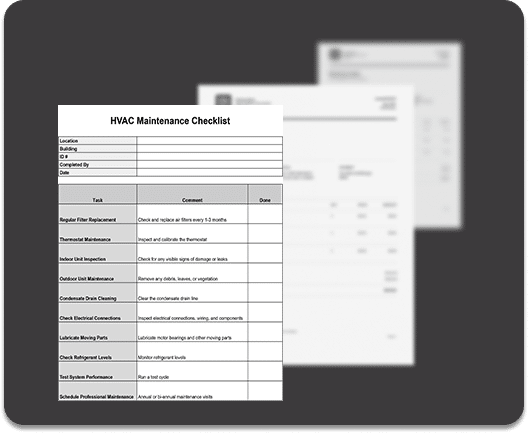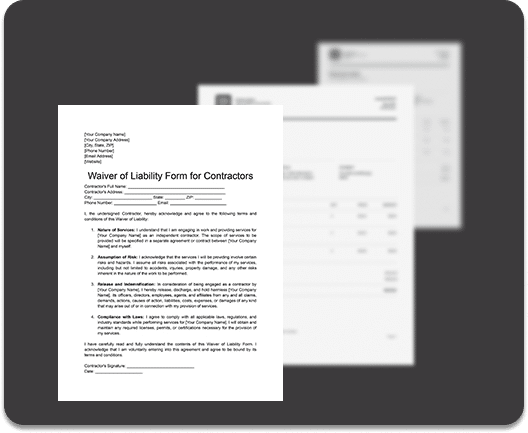If you run your own construction business and you need to hire additional workers, there are two directions you can take. You can either hire an in-house worker (also commonly known as a W2 employee) or have the work done by an independent contractor/subcontractor (a 1099 worker).
Classifying your workers properly with the IRS is crucial, as the repercussions can be heavy penalties from the IRS, or in some cases, even a lawsuit against your organization. Therefore it’s advisable to correctly classify any new hires you are planning to make, as well as to reevaluate your current workers.
Legal reasons aside, there are pros and cons when it comes to hiring in-house employees (w2 workers) and independent contractors (1099 workers). In this article, we’ll discuss these, and also dive deeper into the factors that distinguish a W2 worker from a 1099 contractor.
How to Classify Workers
There are notable distinctions between a W2 employee and a 1099 subcontractor, which go way beyond the filing of taxes. Making the wrong classification can cost you time as well as money. Although figuring out this distinction is straightforward in an office setting, the rules can be hazy for on-field businesses such as construction. The IRS considers three categories of evidence when they evaluate the employment tax status of a worker, which are based on the way you direct and control them. The three categories are:
- Behavioral Control
- Financial Control
- Your relationship with the employee
These are the federal employment guidelines set by the IRS, mainly for tax purposes. In addition to these guidelines, some states have additional laws regarding the classification of workers for tax and benefits purposes. Recently, California passed Assembly Bill 5 (AB5) into law, which has strict instructions for how the construction industry should classify workers.
1. Behavioral Control
According to the IRS, if you have behavioral control over a worker, and can dictate to them when, where, and how they are supposed to work, you should probably classify them as a W2 employee. On the other hand, if the worker owns their own business (a registered business entity), and the nature of your relationship is more of a business-to-client than worker-to-boss, they should be classified as an independent contractor. Behavioral control can be influenced by scheduling, provided equipment, provided training, and the specific job sector in question.The following scenario sheds more light on the meaning of behavioral control: Mario is a plumber who works for a plumbing company, Nintendis Co. His employer needs him to start work at 10 AM every morning, and Mario is held accountable to this start time by his employer. Nintendis Co. supplies all the tools and materials that Mario would need at his job-site. Mario also has his own plumbing business on the side, named Mario Bros. He has his own tools that he uses for his own business, and he purchases the materials he needs for these side projects on his own. As long as he meets the deadlines of Nintendis Co’s customers, he is free to work for his side business anytime. Mario is an employee of Nintendis Co. and receives a W-2 every year that reports his wages, and the amount of tax that Nintendis Inc withholds from his wages. However, for his side-business Mario Bros, Mario is a self-employed subcontractor. He receives 1099 Forms for almost all of his side-jobs, that display the amount he has earned. He must keep documentation of all his income, regardless of whether he received a Form 1099 or not. Mario is also liable to pay his own self-employment tax.This classification is very straight-forward in theory, but it gets complicated in practice. For instance, let’s say you run a plumbing business. Your workers drive their personal cars to each job site. However, they work with tools and wear uniforms provided by the company. They’re given specific guidelines about how to do their job, but it doesn’t make sense for you to be present at every job site to directly oversee their work. Are they W2 employees or independent subcontractors? The two other categories of evidence helps make the distinction clearer.
2.Financial Control
This category deals with whether you, as the employer, have the right to direct and control the financial aspects of the tradesmen’s work, although the IRS hasn’t set any specific dollar amount to measure an employer’s financial control over their worker. Factors of evidence considered under this category include investment, expenses, and opportunity for profit or loss.
Significant Investment
This rule scrutinizes the extent of a worker’s out of pocket investment in the project. If the worker is required to own or rent expensive equipment to perform his job, he may be a subcontractor.
Expenses
This rule examines whether or not a worker is reimbursed for large expenses and looks at the amount of the expenses the worker is expected to pay out of pocket. Generally, if a worker does not have high, unreimbursed expenses, they might be an employee. On the other hand, if they do have high, on-going expenses that are not reimbursed, they may be a subcontractor.
Opportunity for Profit or Loss
This rule examines the worker’s freedom to make decisions, such as how much inventory to carry or whether to buy or rent equipment, and whether or not these decisions have a direct impact on their profit or loss. Consider this scenario as an example: Huey and Dewey are two carpet cleaners, who need two steam cleaners to perform their jobs. After doing some calculations, they determine that buying a steamer would be more cost-effective than renting it. So, they buy a new steam cleaner each. Huey starts seeing an increase in his profits because of his new purchase. Dewey’s work also becomes more profitable. However, his wages remain the same. In this scenario, Huey is most likely a 1099 subcontractor, whereas Dewey might be an employee.Keep in mind that it’s someone’s decision at your company to make inventory, materials, and equipment purchasing/rental decisions. This could be the owner or someone in senior management. These decisions likely apply to all company operations or current/future projects. It can be someone’s job to make these decisions, and that does not mean they are contractors. But, as a construction company, if your workers in the field are independently deciding where to get their equipment and materials, this points to them being classified as contractors – especially if the amount they are paid is affected by their buying decisions.
3.Relationship of the Parties
This category of evidence reviews the presence or absence of employee benefits, written contracts, and how the employer and the worker view their relationship.
Employee Benefits
If benefits of any kind are granted to workers, they are most likely W2 employees. These benefits may include health insurance, paid sick days, paid vacation days, workers’ compensation coverage, 401ks, and others. Depending on your company size and the state in which your business operates, your business may be required to offer health insurance coverage as well as workers’ compensation coverage to w2 employees. On the contrary, companies are not required to have workers’ compensation coverage for 1099 contractors.
Written Contracts
By itself, a written contract is not sufficient evidence when it comes to concluding the status of a worker. They may view a contract that describes a worker as a subcontractor as evidence that you intended the relationship to be independent. However, if you and your worker are not acting according to the terms of the contract, the IRS might ignore the document. This example sheds more light on the relationship and the understanding between the parties involved: Luigi, a carpenter, bid on a job at $50.00 an hour. He estimated the job would take 320 hours. He would be paid $4,000 every two weeks for eight weeks. However, Luigi was able to finish the project in 300 hours. He still received $16,000 ($50.00 x 320 hours). Luigi also does other carpentry projects he finds on Craigslist. Luigi is most likely a 1099 subcontractor as he can set his own rates and market his services to other companies.

Pros and cons of W2 and 1099 Workers
Hiring 1099 workers or independent contractors can help you lower your expenses and legal responsibilities. It would also save you from the tedious paperwork associated with income tax withholdings, employment taxes, liability for your workers’ behaviors. Furthermore, you won’t be expected to offer benefits to a 1099 worker.However, there are some practical disadvantages to hiring 1099 workers. Independent contractors can control their own hours, and as long as their work is up to the standards you set, they can typically work on their own terms without having to stick to strict company guidelines.
Employer Responsibilities
As a business owner, you are expected to carry out specific responsibilities when you hire w-2 employees or independent contractors.
Your responsibilities when you hire a W2 employee
-As the employer, along with FUTA (Federal Unemployment Tax), you are required to pay 50% FICA (which is another name for social security and medicare tax combined) You also need to withhold your worker’s share of FICA, along with their federal income tax as well as state income tax in some states-Your business should issue a W-2 form to the worker, and a copy should be sent to the IRS. -Depending on your business policies and state and federal laws, you will also need to offer fringe benefits, including health insurance, 401Ks, paid sick, and vacation days. In most cases, you are expected to hold workers’ compensation insurance. Using a time clock app with GPS to accurately capture employee hours and ensure compliance is highly recommended.
Your responsibilities when you hire a 1099 worker
When you hire a 1099 worker, your responsibilities are far lesser than when you hire a W2 employee. That is why hiring a 1099 worker is ideal if your projects are short term, and the skill sets you need are very specific. 1099 workers are also suitable for you if you are expecting your crew size to change seasonally. -Generally, you don’t need to withhold taxes from an independent contractor’s pay. You don’t need to pay FUTA or 50% of FICA. You are also not required to hold workers’ compensation insurance. -Further, 1099-MISC Forms should be issued by you to your contractors. If their wages exceed $600, copies of the 1099-MISC forms should be filed with the IRS too.-Unlike with W2 employees, your subcontractors aren’t entitled to receive fringe benefits. Moreover, maintaining their records, paying their taxes, and providing their health insurance is their own responsibility.-Hiring subcontractors instead of W2 workers also reduces your susceptibility to some kinds of lawsuits, such as wrongful termination lawsuits.Between the two types of workers, hiring 1099 workers is less tedious for the employer. But you need to be absolutely sure about the status of your subcontractors under law.

Misclassification and its penalties
You or your business can garner heavy fines if you misclassify a W2 worker as a 1099 one without a “reasonable basis.” If you misclassify a W2 worker as a 1099 contractor, the IRS can penalize you under Section 3509 of the Internal Revenue Code. The fines depend on whether the misclassification was intended by the employer, and if it wasn’t intentional, whether you filed the correct tax returns. Here are three scenarios and the penalties associated with each one:
1.If the IRS determines that the misclassification was just an honest mistake:
You will be charged a fine equalling 1.5% of the worker’s wages, along with 20% of the worker’s FICA that should have been originally withheld from their wages, in addition to your share of the FICA.
2.If the IRS determines that the misclassification was just an honest mistake, however, you failed to file Forms 1099-MISC:
The penalties of 1.5% and 20% are doubled, while your share of the FICA remains the same.
3.If the IRS finds sufficient evidence that you misclassified the class of your workers on purpose: you will be charged penalties equivalent to 100% of taxes that should have been withheld from the worker’s wages, as well as your share of the FICA. In addition to this, under Section 6672 of the Internal Revenue Code, the IRS can impose this penalty simultaneously on the business as well as the officers who were deemed to be personally responsible for the misclassification. Finally, you might also be charged additional penalties as a result of failing to file and/or pay, along with interest on the balance due. You will be liable to pay these taxes and fines on your own, without retrieving them from your workers.The IRS is known to routinely “reclassify” 1099 workers as W2 workers, and the collective fines have been enormous. For example, a company called Stanford Yellow Taxi Cab of Mountain View, California was charged $3 million in back pay and damages for wrongly classifying several taxi drivers as independent contractors.In another example, 16 business owners operating collectively as CSG Workforce Partners, Universal Contracting, LLC, and Arizona Tract/Arizona CLA were charged $700,000 in back wages, damages, fines, and other costs for over 1,000 misclassified workers in construction.
Record keeping requirements
Every employer under the Fair Labor Standards Act (FLSA) must keep certain records for their nonexempt worker. According to to the FLSA, there is no required form for the records, but the records must include accurate information about the employee and data about the hours worked and the wages earned.
To protect yourself it always pays to ensure you keep accurate records your employees hours and their project assignments regardless of whether they are 1099 or W2 worker. To make this easy, use a construction time card app to accurately track hours worked, job sites visited and automate your record keeping.


















